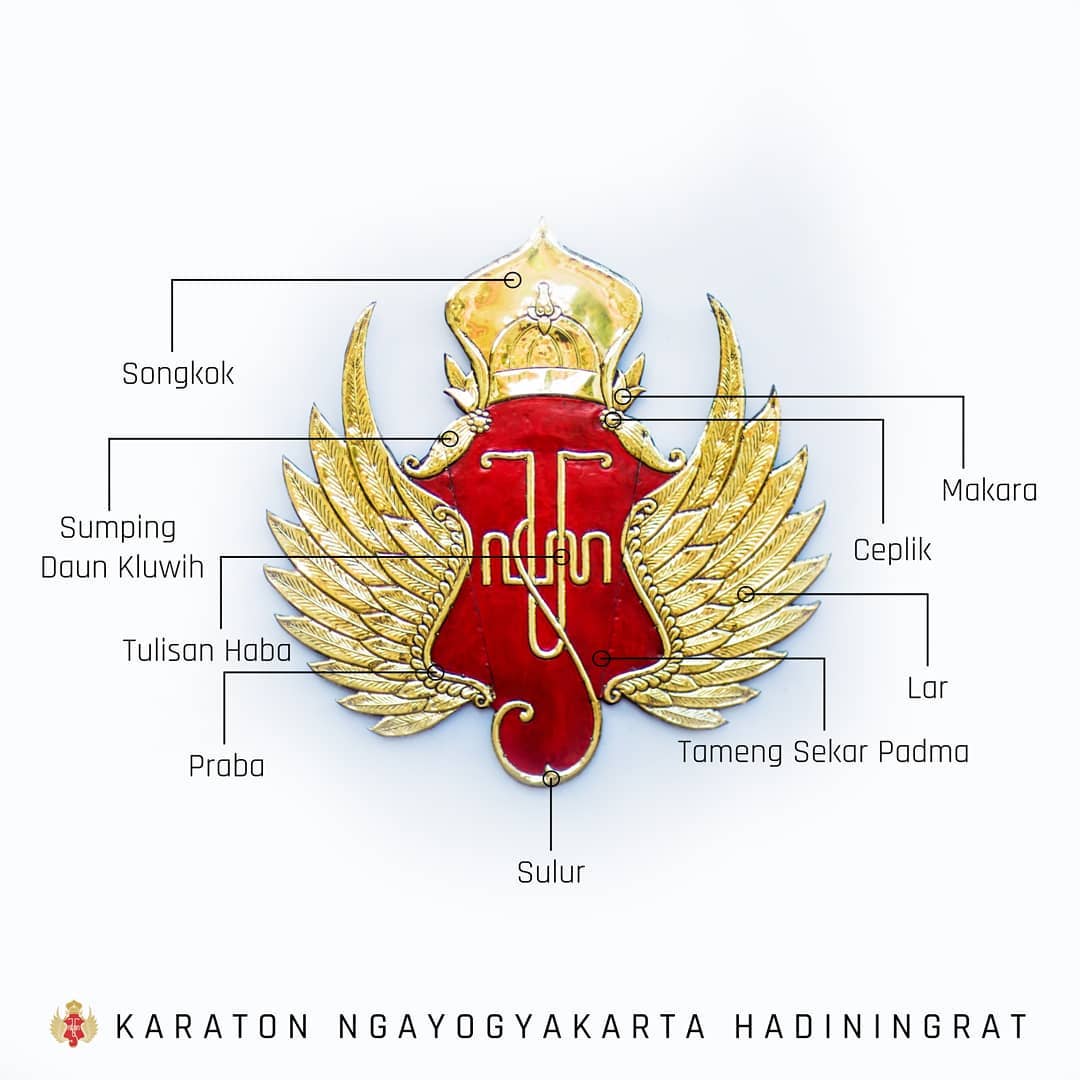News
Praja Cihna: More Than Just the Emblem of the Yogyakarta Palace
Every nation or kingdom has its proud emblem. Indonesia, for example, has the Garuda Pancasila—spreading its wings on textbooks, government buildings, and even on our hundred-thousand rupiah bills. The Yogyakarta Palace (Keraton) also has a symbol of greatness that’s no less iconic: Praja Cihna.
Shaped like a red shield framed with golden wings, this emblem has existed since 1755, the very year Prince Mangkubumi—later known as Sultan Hamengku Buwono I—founded the Yogyakarta Palace. At first glance, it may look like mere decoration, but every detail carries deep meaning.
The name Praja Cihna comes from Sanskrit. “Praja” means servant of the state, while “Cihna” means true nature. Put together, it can be read as “the true nature of a servant of the state.” No wonder this emblem isn’t just stuck on palace walls—it’s also used on official letterheads and even medals of honor.
What makes it fascinating is that the emblem is made up of eight main elements, each with its own symbolism:
-
Songkok / Crown – The headgear of a soldier, symbolizing the noble character of a warrior and the nature of a king.
-
Sumping / Ear Ornament – Shaped like a sunflower, symbolizing life. It’s paired with the keluwih leaf (from the word luwih, meaning excellence) and the makara, a symbol of protection for the safety of the palace.
-
Praba / Radiance – Represents a figure who upholds the honor of the Javanese Mataram tradition.
-
Lar / Wings – Symbol of lofty aspirations, as high as the sky.
-
Tameng / Shield – Its red color stands for bravery, paired with vigilance in defending truth.
-
Ha-Ba Script – The Javanese letters “Ha” and “Ba” stand for Hamengku Buwono. The title carries a noble wish: that the Sultan may protect, defend, and bring prosperity to his people. The golden hue represents grandeur.
-
Kembang Padma (Lotus Flower) – Symbol of earthly life that lays the foundation for the hereafter.
-
Sulur / Vines – Sign of continuous life, growing and spreading endlessly.
Apart from the palace emblem, there’s also a personal version for each reigning Sultan. The difference lies in the addition of a Murda letter beneath the wings, indicating the number of the Sultan in succession. You can even find this personal emblem engraved on household items and artifacts left behind by past rulers.
When you think about it, Praja Cihna is more than just a logo. It’s a visual narrative about values, aspirations, and the responsibilities of a Sultan. Like batik or wayang, this emblem shows us how Javanese culture has always found a stylish way to speak about life and its meaning.



